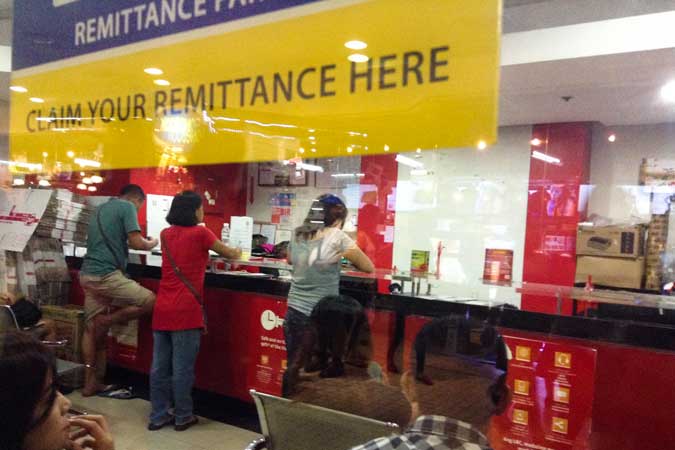
THE PANDEMIC is putting more people at ease with digital remittance transactions, paving the way for these firms’ tie-ups with other businesses looking to utilize electronic payments, remittance players said.
“We have experienced a tremendous demand not only from the retail [side] but also for the businesses, for partners,” UniTeller Philippines Country President Noel C. Cristal said in an interview.
Mr. Cristal said some firms have started to tap them for white label services related to remittances.
“Right now, we are looking for partners that are e-wallet capable because we think that’s where [the trend is] going,” he said.
With customers becoming more comfortable with digital payments, online remittance transactions will likely thrive in the long term, WorldRemit Philippines Country Director Earl Allan E. Melivo said.
Mr. Melivo, however, noted that there are clients that remain skeptical about using apps to transfer money back home.
“We understand the apprehension, but as the COVID-19 pandemic highlighted, access to digital payment channels is imperative to ensure continuity of providing financial support to recipients back home,” Mr. Melivo said in an e-mail.
Remittances help fuel consumption that makes up 70% of the economy.
Money sent home by overseas Filipino workers (OFWs) in November grew by its slowest pace in three months, with cash remittances reaching its lowest level since May as lockdowns were reimposed in some countries due to a spike in coronavirus cases.
Data from the Bangko Sentral ng Pilipinas (BSP) released last month showed cash remittances coursed through banks edged up by 0.3% to $2.379 billion in November from $2.372 billion a year earlier.
Meanwhile, cash remittances for the 11 months to November dropped 0.8% to $27.013 billion from $27.231 billion a year earlier. The decline is below the BSP’s projection of a 2% contraction for the full year.
For Mr. Cristal, the digital payments transformation roadmap of the BSP has become a guiding principle for many firms integrating online transactions into their businesses.
The central bank wants 50% of payments in terms of both volume and value done digitally by 2023. With the coronavirus pandemic making consumers prefer safety and convenience, the BSP is bullish this goal could be reached before the 2023 target.
A Better than Cash Alliance report showed online payments increased to make up 10% of the total volume as of 2018 from just 1% in 2013. By value, it also increased to comprise 20% of the total in 2018 from 8% in 2013.
CHALLENGES TO DIGITALIZATION
Remittance players said they would continuously need to push initiatives to boost the adoption of digital transactions by both senders and receivers of remittances.
“One of the challenges for digital payments providers like WorldRemit is to continue educating consumers on how to use our platforms and knowing they understand the benefits of using such; providing superior speed, cheaper pricing and greater features thus providing a greater experience to customers and allowing savings to be made,” Mr. Melivo said.
UniTeller’s Mr. Cristal said clients at the sender side seem to be more at ease with the shift to digital transactions as cash remains king for many remittance recipients who are already used to spending money right after an ATM withdrawal or a visit to a remittance center or pawnshop.
Another issue would be “making Lolo and Lola to adapt to this digital economy,” he said.
Mr. Cristal said while spending e-money is very convenient in Metro Manila, the case is not always true in rural areas where more people are still reliant on cash transactions.
“For those in the provinces, the unbanked, how do you use an e-wallet? Adoption is critical,” he said. “Where can an e-wallet owner spend when there are no merchants accepting such mode of payments?”
He said he hopes that with government initiatives such as the national QR code, the road to a cash-lite society will be more inclusive across the country. — Luz Wendy T. Noble

